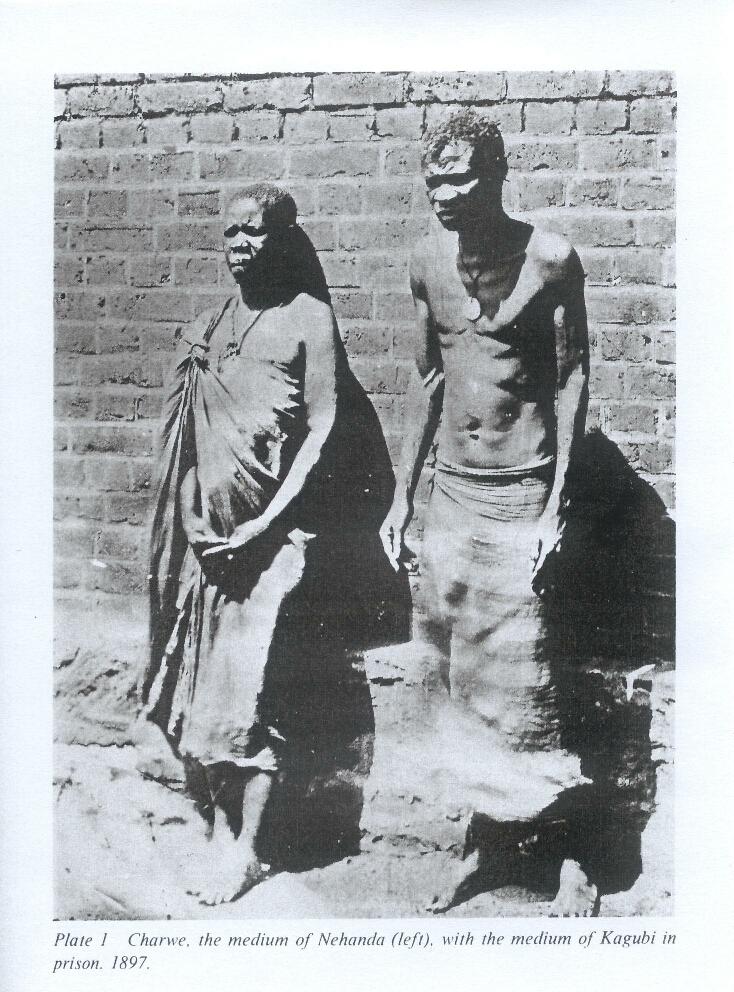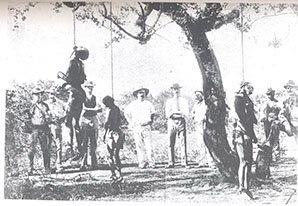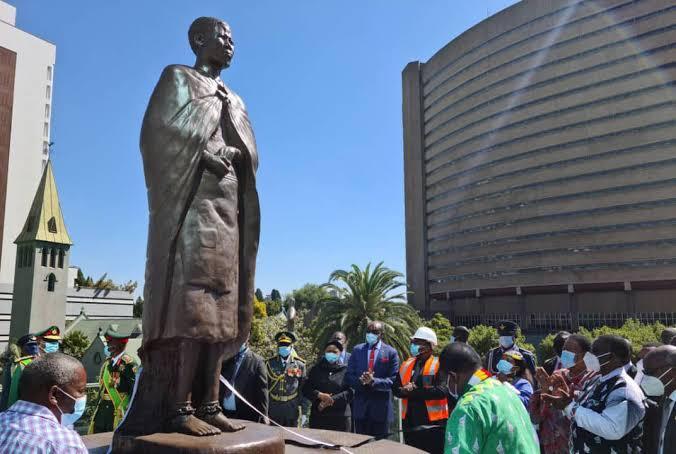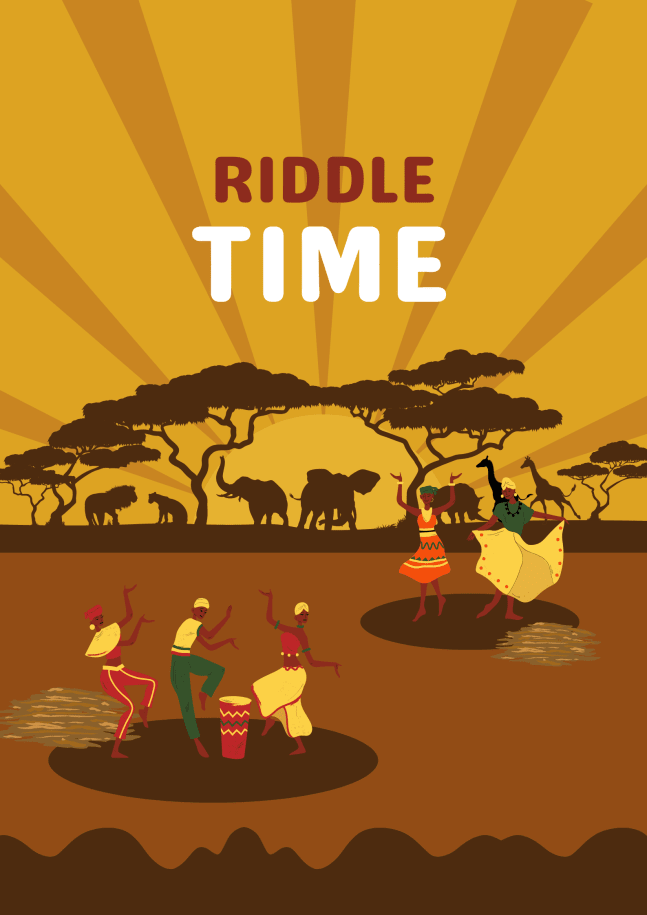The year is 1896.
In Mashonaland, the British South Africa Company is under siege.
The Shona and Matabele people have had enough.
They accuse the British of stealing their land.
Of forcing them into unpaid labour.
Of bringing droughts, locusts, and cattle disease.
To make matters worse for the British, they’re short on troops.
Most of their forces have been sent south to deal with the Jameson Raid.
To the settlers, it looks like a tribal uprising.
But it’s more than that.
This war is spiritual.
And at the centre of it stands a woman.
Not just any woman.
A spirit medium.
And she is not afraid.
Nehanda Charwe Nyakasikana is her name!
Nehanda Charwe Nyakasikana
To understand Nehanda’s story better, we have to go back to the 1400s, when the Mwenemutapa Kingdom was formed.
If you might recall our earlier story on the Kingdom of Great Zimbabwe, located in what is now Zimbabwe, one of its warrior princes, Nyatsimba Mutota, was sent by his father in the 1430s toward the Zambezi River to find new salt sources.
Mutota travelled with an army, conquering and absorbing the chiefdoms he encountered along the way.
By the time he reached the Zambezi, he had conquered so much land that his kingdom surpassed Great Zimbabwe, which he eventually defeated in war.
Mutota had many children, including a son named Nyanhewe Matope and a daughter named Nyamhita.
Nyamhita was believed to be possessed by a powerful ancestral spirit known as Nehanda. This spirit, called a Mhondoro, was regarded as an oracle that could interpret the will of Mwari, the God of the Shona people.
Matope was chosen as the successor. But before his father could grant him the throne, he instructed him to sleep with his sister Nyamhita to increase his spiritual power.
Yes, that’s incest. But… oh well!
Strangely, it worked. Matope grew stronger and went on to conquer even more land.
As a reward, he handed part of the empire to Nyamhita, who became a powerful leader in her own right.
When she died, the Nehanda spirit was passed on to her daughters. That tradition continued for generations, spanning over 500 years.
Enter Charwe Nyakasikana
In 1840, a girl named Charwe Nyakasikana was born in Chishawasha District.
From birth, it was believed she was the reincarnation of the original Nehanda Nyamhita. She made prophecies and performed ceremonies that brought rain and good harvests.
When the first European settlers arrived, Nyakasikana welcomed them warmly, even gifting them a black cow. She encouraged her people not to fear the whites. It was through her influence that trade and peaceful relations were initially established.
But by 1894, things had soured.
The British began imposing taxes like the hut and poll tax and demanded unpaid labour on their projects.
This pushed the Shona and Matabele people to a breaking point.
Nehanda Nyakasikana joined forces with Kaguvi Gumboreshumba, another spirit medium considered her spiritual husband, and Mukwati, a priest of the Mwari shrine.
Together, they led a widespread rebellion against the British, known as The First Chimurenga War (1896–1897) or The Second Matabele War.
As spirit mediums, they were believed to speak for God. The people followed them into war, convinced that Mwari had declared the white man responsible for the drought, plagues, and livestock deaths.
They were told not to fear, as the bullets of the white men would turn into water.
At this point… it almost sounds like the Maji Maji rebellion in Tanzania led by Kinjeketile Ngwale. Hehehe.
The trio led guerrilla warfare from the forests. They were partly successful, killing around 500 settlers, including Native Commissioner Henry Hawkins Pollard, whose head Nehanda Nyakasikana had ordered to be chopped off.
Exit Nehanda Nyakasikana
By late 1897, Nehanda and Kaguvi were captured and sentenced to death by hanging.

Image 1: Nehanda Nyakasikana (left) and Kaguvi (right) after being captured in 1897. Credits: Wikipedia.
Mukwati was never arrested, but died in the same year.
Before their execution, both were asked to convert to Christianity.
Kaguvi agreed, but Nyakasikana declined.
In an act of badassery, she told the British that her body would rise again to lead a second, and this time victorious, struggle against them.

Image 2: The execution of Nyakasikana & Kaguvi. Credits: Talk Africana
After her execution, her head and spiritual artefacts were shipped to England as trophies. They remain there to this day.
Her capture marked the end of the First Chimurenga War, in which at least 5,000 Shona and Matabele people died.
The Second Chimurenga War
The Shona and Matabele might have lost the war, but they did not lose their spirit (the Nehanda).
Nyakasikana’s heroism became a significant source of inspiration in their nationalist struggle for liberation, particularly in the 1960s and 1970s.
Nehanda’s courage became a rallying symbol during the Second Chimurenga War (1964–1979), fought against the Rhodesians.
As she foretold, the people triumphed and Zimbabwe gained independence.
Legacy
Today, Nehanda Nyakasikana is celebrated as the grandmother of Zimbabwe and a heroine of resistance.
A maternity wing at Harare’s Parirenyatwa Hospital is named after her.
In 2021, a statue of her was unveiled in central Harare, where Julius Nyerere Way intersects with Samora Machel Avenue.
(Oh wow! Just imagine the symbolism. Could it be that she was the godmother of these revolutionaries? Let’s believe so.)

Image 3: The statue of Nehanda Nyakasikana. Credits: Talk Africana
Her name is now etched in stone, in hospital wings, and in the hearts of a people who refused to be broken.
Her story lit the flame.
Her spirit led a nation.
Remember her name.
Join the Lughayangu Community!

